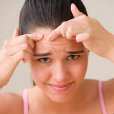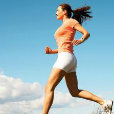Uit recent onderzoek van het Centre for Evidence-based Chinese Medicine (Beijing, China) blijkt dat een geïntegreerd behandelplan van acupunctuur en Chinese kruiden effectiever is bij acne dan alleen Chinese kruiden. Verder blijkt dat cupping in de behandeling van acne een significant beter resultaat behaald dan medicatie.
Middels een systematische review van 43 onderzoeken waaraan 3453 patiënten deelnamen werd de effectiviteit van acupunctuurpunt stimulatie bepaald. Acupunctuur stimulatie omvat o.a. acupunctuur en cupping. In de individuele onderzoeken die opgenomen werden in de review werd het effect van stimulatie vergeleken met het effect van geen behandeling, een placebo of geneesmiddelen.
Uit de meta-analyse blijkt dat er een significant verschil is in de toename van klachtenvrije patiënten bij een geïntegreerde behandeling van acupunctuur en Chinese kruiden ten opzichte van de behandeling met alleen Chinese kruiden. Cupping was tevens significant effectiever dan medicatie en resulteerde in meer patiënten zonder klachten. Er was geen sprake van ernstige bijwerkingen in de geanalyseerde onderzoeken.
Dit onderzoek indiceert dat stimulatie van acupunctuurpunten in combinatie met andere behandelmethoden effectief acne behandeld. Verder onderzoek is nodig om deze bevindingen te bekrachtigen.
Bron:
Acupoint Stimulation for Acne: A Systematic Review of Randomized Controlled Trials
Hui-juan Cao, Guo-yan Yang, Yu-yi Wang, and Jian-ping Liu
Medical Acupuncture. June 2013
Acupunctuurgids.nl

Gepost in Acupunctuur, Traditionele chinese geneeskunde ~ Geen Reactie
Nitric oxide is known to be a signaling gas molecule that mediates dilation of blood vessels and thus is used to regulate blood flow and volume. A previous study showed how acupuncture can influence blood flow to different parts of the body. Link – Science validates traditional Chinese acupuncture
This experimental Korean study aimed to determine if there is a difference in nitric oxide levels directly at acupuncture points, compared to non-acupuncture points.
A very sensitive amperometric oxide sensor microsensor was used for this study.
The results showed a consistent statistical significant of higher nitric oxide levels around acupuncture points. This can be seen in the photo; the Heart meridian on the right hand side of the diagram shows green/ yellow/ red colours. On the left is the Lung channel, showing significant nitric oxide levels at Lung 8 and Lung 9. In the middle is the pericardium channel, showing concentrations of nitric oxide at Pericardium 6 and 7 point.
The report concluded that this tight relationship between nitric oxide levels and acupuncture points provides direct and scientific evidence on the physical existence of acupuncture points and may contribute to shedding light on their possible physiological/biological functions as understood in eastern medicine for centuries.
Ref : Measurements of Location-Dependent Nitric Oxide Levels on Skin Surface in relation to Acupuncture Point. Evid Based Complement Alternat Med. 2012;2012:781460. doi: 10.1155/2012/781460. Epub 2012 Sep 24
Gepost in Acupunctuur, Chinese geneeskunde, Opleiding acupunctuur, Traditionele chinese geneeskunde ~ Geen Reactie
IVF clinics have improved their success rates steadily over the last decade or two. But in recent years these success rates have reached a plateau. Now that follicle stimulation, fertilization of eggs and embryo culture have been developed as far as current technology will allow, successful implantation of the embryo in the uterine lining is where improvement is needed to push success rates up again.
New developments in this area may be coming from an unexpected quarter. The last ten years have seen the publication in reputable medical journals, of the results of a number of clinical trials investigating the effect of acupuncture at the time of embryo transfer. Some of these trials have shown a significant increase in pregnancy rates when acupuncture is used and others have shown little effect. More research is needed in this area to discover if there is a particular group of women who do benefit from acupuncture on the day of embryo transfer. It appears that where the overall expectation of pregnancy is high (ie the control group rate was around 50% or more) then acupuncture performed on the day of embryo transfer confers no benefit. However where control group pregnancy rates were lower (around 30%) acupuncture appears to add a significant benefit. Hence many clinics recommend acupuncture to women who have had previous failed cycles or who are 35 or older.
Most scientists and clinicians would agree that this is still a controversial area and that more research needs to be done before acupuncture is generally accepted as an integral part of IVF treatment protocols. There is a compelling body of evidence however, of increased numbers of live births among IVF patients having acupuncture, and based on their own clinical experience, a number of IVF clinics in the United States consider acupuncture a standard component of care for their IVF patients.
The acupuncture IVF support clinic is actively involved in research projects in conjunction with IVF Australia, Genea and other IVF centres to examine the mechanism of acupuncture and Chinese Medicine in increasing implantation and pregnancy rates.
Gepost in Acupunctuur, Opleiding acupunctuur, Traditionele chinese geneeskunde ~ Geen Reactie
New research reveals that acupuncture stimulates the release of biochemicals that relieve athletic fatigue due to intensive endurance exercises. Researchers found that acupuncture applied to specific acupuncture points increases antioxidant activity and decreases biochemical releases that are markers for oxidative stress. The researchers applied electroacupuncture to acupoints on the legs in this randomized, controlled study. The results measured specific results showing that electroacupuncture has beneficial effects on human health by intervening in the free radical metabolism process in athletes.
Acupuncture needling is applied in this image. Acupuncture NeedlingThe endurance athletes received electroacupuncture once a day for 15 days during the training period. The acupuncture point selection included acupoints on the Spleen, Stomach and Liver acupuncture channels: SP10 (Xuehai), ST36 (Zusanli), LV3 (Taichong), SP6 (Sanyinjiao). Acupuncture needle retention time was 30 minutes per acupuncture treatment.
The researchers measured significant increases in superoxide dismutase (SOD) and significant decreases in serum malondialdehyde (MDA) for the endurance athletes. Superoxide dismutases are enzymes that have important antioxidant effects in cells. Superoxide dismutases protect cells from toxicity and exert powerful pharmacological anti-inflammatory responses. Acupuncture successfully increased this important biochemical in the bloodstream for the athletes.
Acupuncture was also shown to lower levels of malondialdehyde, an organic compound that is a marker for oxidative stress. Acupuncture lowers levels of this biochemical responsible for toxic stress in cells. Malondialdehyde is associated with pathologies such as disorders of the cornea and osteoarthritis. The researchers concluded that electroacupuncture decreases MDA and increases SOD in athletes undergoing “intensive endurance exercise, which may contribute to its effect in relieving athletic fatigue.”
The researchers chose two acupuncture points on the Spleen channel. SP10 is located 2 cun above the medio-superior border of the patella, when the knee is flexed, on the bulge of the medial portion of the m. quadriceps femoris. SP10 is given the Chinese Medicine name of Xuehai, translated as the Sea of Blood. According to Traditional Chinese Medicine principles, SP10 harmonizes nutritive Qi and cools heat. SP10 is commonly used by licensed acupuncturists in the treatment of irregular menstruation, amenorrhea, abnormal uterine bleeding, urticaria, eczema, neurodermatitis, pruritis and erysipelas.
SP6 is located 3 cun directly above the tip of the medial malleolus on the posterior border of the medial aspect of the tibia. SP6 has the Chinese Medicine name of Sanyinjiao, translated as Three Yin Junction. SP6 is the meeting point of the three lower Yin channels and has the Traditional Chinese Medicine (TCM) functions of strengthening the Spleen, transforming dampness, spreading the Liver Qi and benefitting the Kidney. SP6 is used by licensed acupuncturists for the treatment of a variety of indications including abdominal pain and distention, diarrhea, dysmenorrhea, irregular menstruation, uterine bleeding, leukorrhea, prolapse of the uterus, sterility, difficult or delayed labor, nocturnal emissions, enuresis, dysuria, lower limb atrophy or motor impairment of the limbs, vertigo from Blood deficiency and insomnia.
ST36 was also used in the study. This acupuncture point is located 3 cun below ST35 and is one finger-breadth from the anterior crest of the tibia in the m. tibialis anterior. This acupuncture point is located lateral to a tibial notch that can be felt upon palpation. ST36 is given the name Zusanli, translated as Leg Three Measures. ST36 is given many functions and indications in the Chinese Medicine system. It is a He Sea, Earth, Lower He Sea Point of the Stomach and Sea of Nourishment Point. ST36 orders the Spleen and Stomach, regulates Qi and Blood and strengthens weak and deficient conditions. ST36 is traditionally used for the treatment of gastric pain, vomiting, abdominal distention, diarrhea, constipation, mastitis, breast abscesses, enteritis, gastritis, edema, asthma, general weakness, emaciation, anemia, indigestion, apoplexy, shock, hemiplegia, neurasthenia and mania.
LV3 was used in this study. LV3 is located on the dorsum of the foot, in the depression distal to the junction of the first and second metatarsal bones. According to Traditional Chinese Medicine theory, LV3 is a Shu Stream, Earth and Source Point. LV3 pacifies the Liver, regulates the Blood and opens the channels. LV3 is used by licensed acupuncturists for the treatment of headaches, vertigo, insomnia, irregular menstruation, abnormal uterine bleeding, joint and extremity pain including arthritis, eye pain, rib pain, retention of urine and enuresis.
Reference:
Liu, J. Y., and L. M. Liu. “[Influence of electroacupuncture intervention on free radical metabolism in athletes undergoing intensive endurance exercise].” Zhen ci yan jiu= Acupuncture research/[Zhongguo yi xue ke xue yuan Yi xue qing bao yan jiu suo bian ji] 38, no. 1 (2013): 48-51.
Gepost in Acupunctuur, Opleiding acupunctuur ~ Geen Reactie
A new study confirms that acupuncture’s medical benefits are acupuncture point specific for its effective actions on the stomach, intestines and heart. Researchers discovered that needling acupuncture point CV12 increases HRV, heart rate variability, an important ability of the human heart to vary its rate in reaction to bodily demands. Needling CV12 did not affect electrogastrogram signals, a measure of electric signals in the stomach and intestines. The converse is true of needling acupuncture point UB32. Applying an acupuncture needle to this point affects electrogastrogram readings but does not affect HRV.
Acupuncture has point specific medical actions. Acupuncture This is the latest in a series of investigations proving that specific acupuncture points have specific effects. In a related MRI acupuncture study, investigators note that acupuncture “induce(s) different cerebral glucose metabolism changes in pain-related brain regions and reduce(s) intensity of pain” for patients with migraines. PET-CT neuroimaging (positron emission tomography – computed tomography) revealed that the choice of acupuncture points used determines exact changes in brain glycometabolism in specific regions of the brain.
Researchers at the University of California School of Medicine (Irvine, California) came up with similar results, “Recent evidence shows that stimulation of different points on the body causes distinct responses in hemodynamic, fMRI and central neural electrophysiological responses.” The investigators reviewed MRI results and noted that “stimulation of different sets of acupoints leads to disease-specific neuronal responses, even when acupoints are located within the same spinal segment.”
This type of research demonstrates that acupuncture points have specific biophysical effects on human health. For centuries, Traditional Chinese Medicine (TCM) scholars have documented specific clinical results for individual acupuncture points and groupings of acupuncture points. Researchers investigated this theoretical and clinical construct with MRI imaging technology to test for acupuncture point specificity. Their findings agree with the traditional view that the functional medicinal actions of individual acupuncture points have unique biophysical affects and render specific beneficial clinical outcomes for patients.
Bron: http://www.healthcmi.com
Gepost in Acupunctuur, Chinese geneeskunde, Chinese geneeswijzen, Opleiding acupunctuur ~ Geen Reactie









